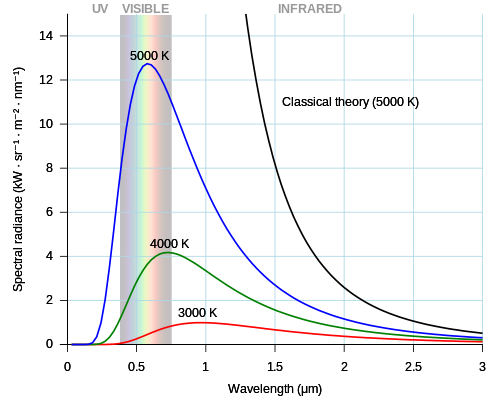Carbon outgassing processes
The deep carbon cycle is the movement of carbon through the Earth's mantle and core.
It forms part of the carbon cycle
and is intimately connected to the movement of carbon in the Earth's
surface and atmosphere. By returning carbon to the deep Earth, it plays a
critical role in maintaining the terrestrial conditions necessary for
life to exist. Without it, carbon would accumulate in the atmosphere,
reaching extremely high concentrations over long periods of time.
Because the deep Earth is inaccessible to drilling, not much is
conclusively known about the role of carbon in it. Nonetheless, several
pieces of evidence—many of which come from laboratory simulations of
deep Earth conditions—have indicated mechanisms for the element's
movement down into the lower mantle, as well as the forms that carbon
takes at the extreme temperatures and pressures of this layer.
Furthermore, techniques like seismology
have led to greater understanding of the potential presence of carbon
in the Earth's core. Studies of the composition of basaltic magma and the flux of carbon dioxide out of volcanoes reveals that the amount of carbon in the mantle is greater than that on the Earth's surface by a factor of one thousand.
Lower mantle
Movement of oceanic plates—which carry carbon compounds—through the mantle
Carbon principally enters the mantle in the form of carbonate-rich sediments on tectonic plates of ocean crust, which pull the carbon into the mantle upon undergoing subduction.
Not much is known about carbon circulation in the mantle, especially in
the deep Earth, but many studies have attempted to augment our
understanding of the element's movement and forms within said region.
For instance, a 2011 study demonstrated that carbon cycling extends all
the way to the lower mantle. The study analysed rare, super-deep diamonds at a site in Juina, Brazil, determining that the bulk composition of some of the diamonds' inclusions matched the expected result of basalt melting and crystallisation under lower mantle temperatures and pressures.
Thus, the investigation's findings indicate that pieces of basaltic
oceanic lithosphere act as the principal transport mechanism for carbon
to Earth's deep interior. These subducted carbonates can interact with
lower mantle silicates and metals, eventually forming super-deep diamonds like the one found.
Diagram of carbon tetrahedrally bonded to oxygen
Carbonates descending to the lower mantle form other compounds
besides diamonds. In 2011, carbonates were subjected to an environment
similar to that of 1800 km deep into the Earth, well within the lower
mantle. Doing so resulted in the formations of magnesite, siderite, and numerous varieties of graphite. Other experiments—as well as petrologic
observations—support this claim, finding that magnesite is actually the
most stable carbonate phase in the majority of the mantle. This is
largely a result of its higher melting temperature. Consequently, scientists have concluded that carbonates undergo reduction as they descend into the mantle before being stabilised at depth by low oxygen fugacity environments. Magnesium, iron, and other metallic compounds act as buffers throughout the process.
The presence of reduced, elemental forms of carbon like graphite would
indicate that carbon compounds are reduced as they descend into the
mantle.
Nonetheless, polymorphism alters carbonate compounds' stability at different depths within the Earth. To illustrate, laboratory simulations and density functional theory calculations suggest that tetrahedrally-coordinated carbonates are most stable at depths approaching the Core-Mantle Boundary. A 2015 study indicates that the lower mantle's high pressures cause carbon bonds to transition from sp2 to sp3 hybridised orbitals, resulting in carbon tetrahedrally bonding to oxygen. CO3 trigonal groups cannot form polymerisable networks, while tetrahedral CO4 can, signifying an increase in carbon's coordination number,
and therefore drastic changes in carbonate compounds' properties in the
lower mantle. As an example, preliminary theoretical studies suggest
that high pressures cause carbonate melt viscosity to increase; the
melts' lower mobility as a result of the property changes described is
evidence for large deposits of carbon deep into the mantle.
Accordingly, carbon can remain in the lower mantle for long
periods of time, but large concentrations of carbon frequently find
their way back to the lithosphere. This process, called carbon
outgassing, is the result of carbonated mantle undergoing decompression
melting, as well as mantle plumes carrying carbon compounds up towards the crust. Carbon is oxidised upon its ascent towards volcanic hotspots, where it is then released as CO2. This occurs so that the carbon atom matches the oxidation state of the basalts erupting in such areas.
Core
Analysis
of shear wave velocities has played an integral role in the development
of knowledge about carbon's existence in the core
Although
the presence of carbon in the Earth's core is well-constrained, recent
studies suggest large inventories of carbon could be stored in this
region. Shear (S) waves moving through the inner core travel at about fifty percent of the velocity expected for most iron-rich alloys.
Considering the core's composition is widely believed to be an alloy of
crystalline iron with a small amount of nickle, this seismographic
anomaly points to another substance's existence within the region. One
theory postulates that such a phenomena is the result of various light
elements, including carbon, in the core. In fact, studies have utilised diamond anvil cells to replicate the conditions in the Earth's core, the results of which indicate that iron carbide (Fe7C3)
matches the inner core's sound and density velocities considering its
temperature and pressure profile. Hence, the iron carbide model could
serve as evidence that the core holds as much as 67% of the Earth's
carbon. Furthermore, another study found that carbon dissolved in iron and formed a stable phase with the same Fe7C3 composition—albeit with a different structure than the one previously mentioned.
Hence, although the amount of carbon potentially stored in the Earth's
core is not known, recent research indicates that the presence of iron
carbides could be consistent with geophysical observations.




